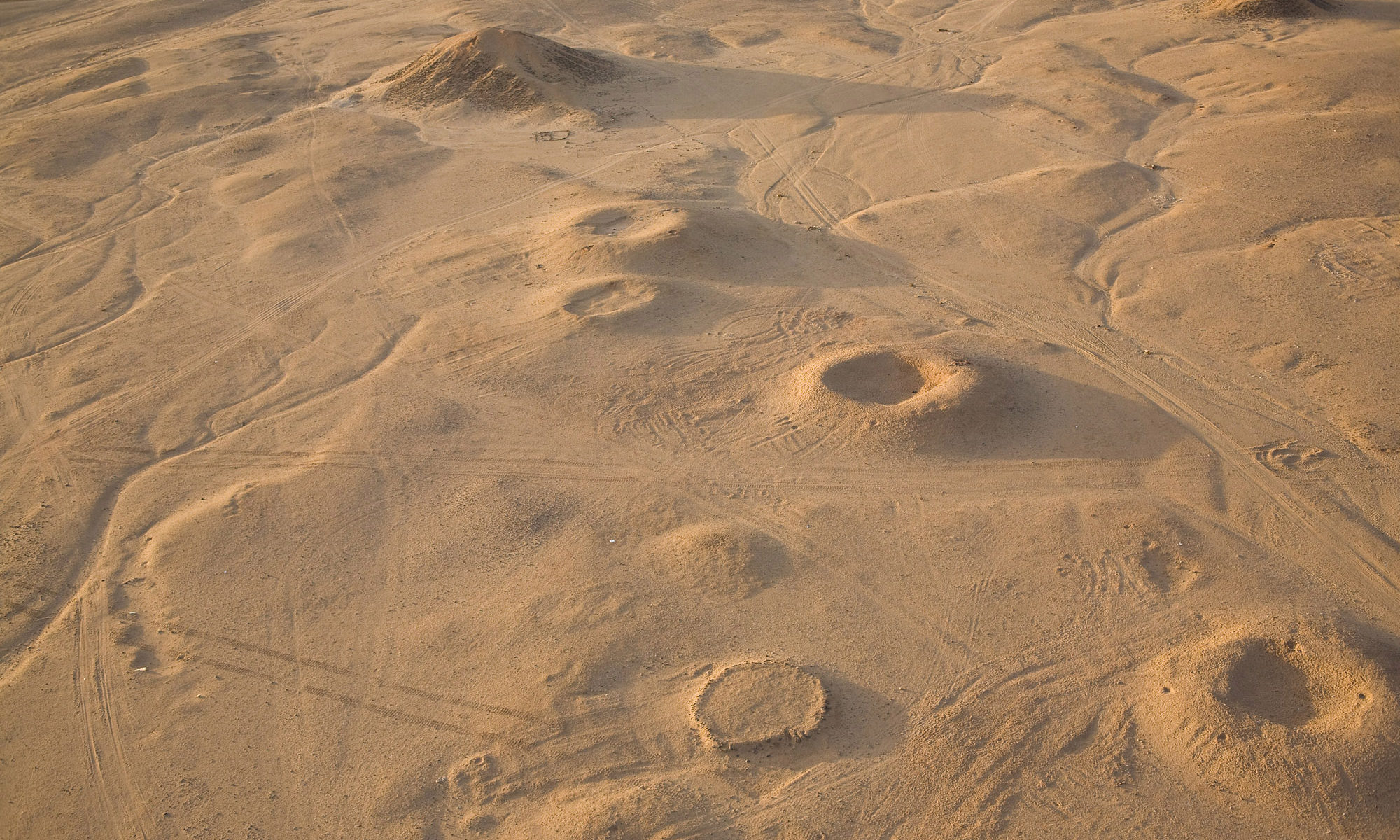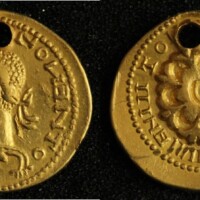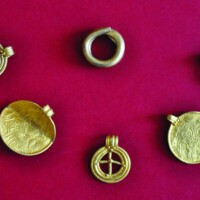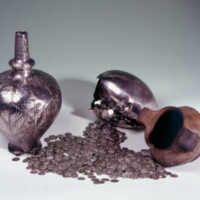Address:
00-927 Warsaw, ul. Krakowskie Przedmieście 26/28, Szkoła Główna, room 3.27; ul. Smyczkowa 14, rooms 306 and 307.
Head of Department:
prof. dr hab. Aleksander Bursche
Department Staff:
dr hab. Roksana Chowaniec
Dr. Ireneusz Jakubczyk
Dr. Piotr Jaworski
Dr. Szymon Jellonek
Dr. Kyrylo Myzgin
Dr. Anna Zapolska
PhD students:
Jakub Artemiuk
Marina Filatova
Robert Janiszewski
Vital Sidarovich
Grants coordinator:
dr hab. Arkadiusz Dymowski
About the Department:
The Department of Numismatics and Museology evolved from the Department of Contacts of the Mediterranean World with Barbaricum, a division of the former Institute of Archaeology UW, with some welcome additions made to our academic staff. The Department specializes in ancient and barbarian numismatics (Photo 1), particularly in the analysis of monetary phenomena and their interpretation, archaeology of the Migration Period in East-Central Europe (Photo 2), museology, and problems of archaeological conservation, monuments protection and cultural heritage management. An important aspect of our research are contacts of the Classical World with communities in the Babaricum, and in particular the broader issue of Roman imports (Photo 3). We publish our findings in successive tomes of the series Corpus der Römischen Funde in Europäischen Barbaricum-Polen with supplements. Another key speciality of our Department are digital numismatics and archaeology (see https://coindb-prod.ocean.icm.edu.pl/AFE_PL/, https://rgcb.lach.uw.edu.pl).
Our recent major achievement was organising the XVI International Numismatic Congress held in the Central Campus of the University of Warsaw in September 2022 (Photo 4), with an attendance of 650 (https://inc2022.pl/). We are currently preparing the conference proceedings for publication by Brepols Publishers in 2024. Organisation of the Congress and publication of conference proceedings was financed from the Ministry of Science and Higher Education of Poland grant ‘Excellence Science’.
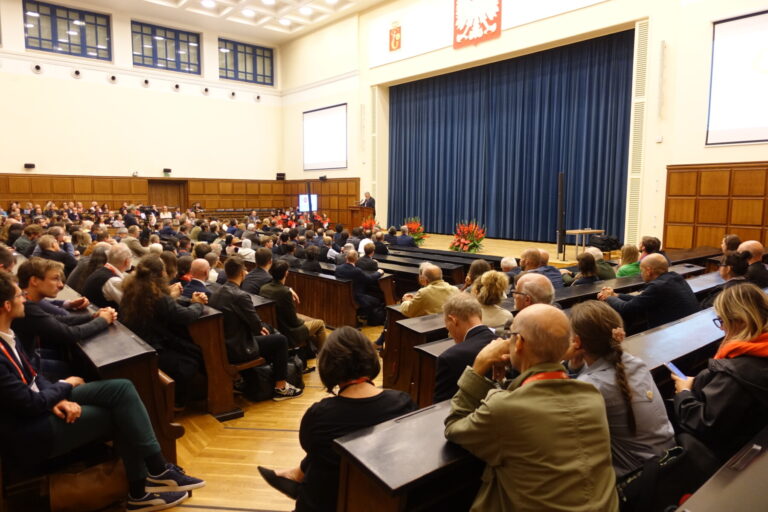
Archaeological fieldwork:
Ten seasons of excavations were conducted by the team of dr hab. Roksana Chowaniec at Akrai (Latin Acrae) a Greek and Roman site in Sicily, located on SW margin of the modern town of Palazzolo Acreide, in a hill in the Hyblean Mountains in what has been the first ever dig run in Italy by Polish mission (Photo 5).
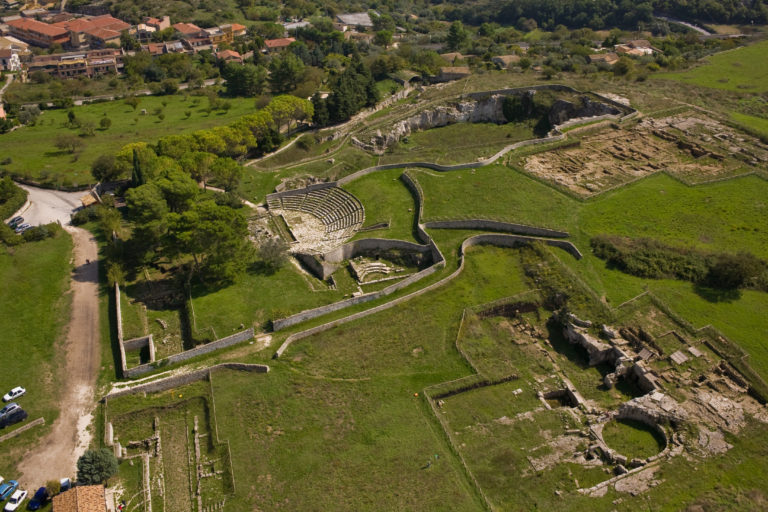
A three-years’ multidisciplinary study financed from the Polish National Science Centre grant ‘Maestro’ of the Hanging Cave, an important late Migration Period site in the Polish Jura at Kroczyce-Okupne, 80 km north of Cracow (Photo 6).
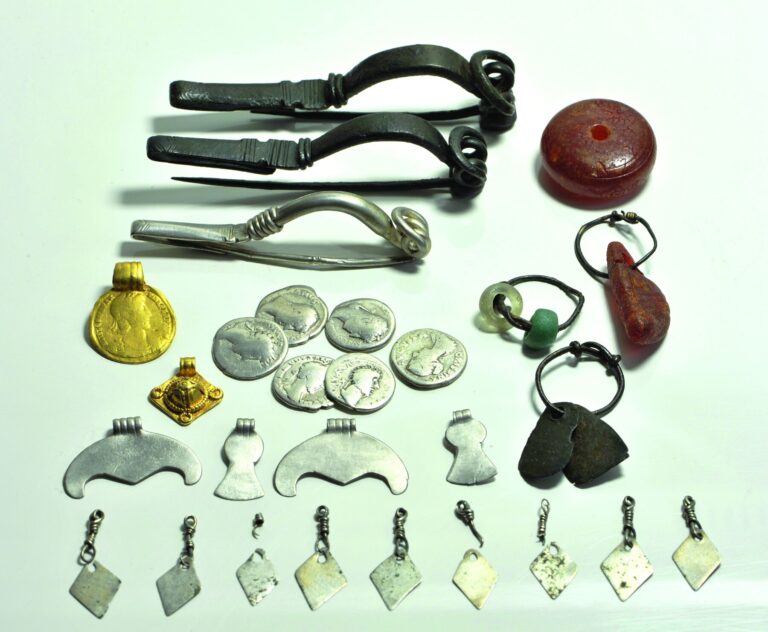
After a 12-years’ break caused by the civil war in Libya archaeological fieldwork was resumed in 2022 in Ptolemais. This large Greek port city was established in the 3rd century BC in Cyrenaica in the eastern region of Libya. In late AD 3rd century it became the capital of the Roman province of Libya Superior. The Polish dig in Ptolemais was initiated in 2001 by Professor Tomasz Mikocki (1954–2007) world class art historian and recognized classical archaeologist. A major highlight of the University of Warsaw dig was the discovery of the House of Leukaktios (3rd c. AD) richly decorated with mosaics and polychrome wall paintings (Photo 7). In 2006 a hoard of Roman coins (tpq = AD 262) was unearthed in the neighbourhood. The Head of the Polish Archaeological Mission to Ptolemais is dr Piotr Jaworski.
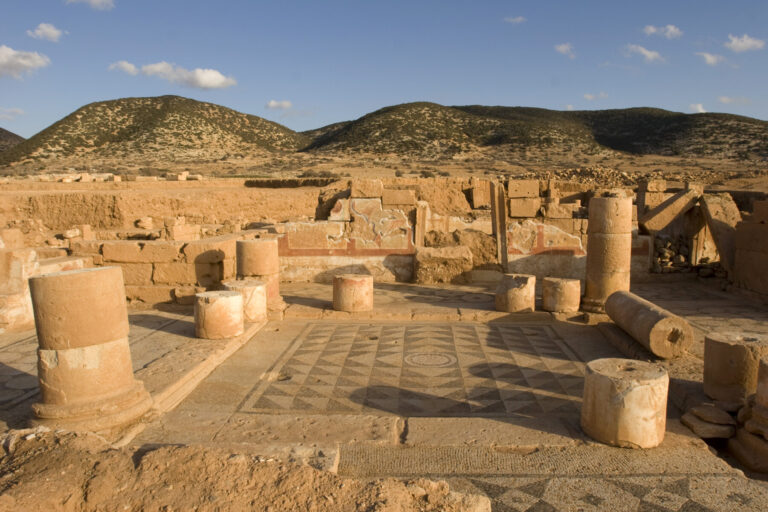
Website: ptolemais.uw.edu.pl, Facebook: Polish Archaeological Mission to Ptolemais
Grants:
The most significant projects implemented in recent years:
– Finds of Roman Coins from Poland and lands connected historically with Poland financed from the National Programme for the Development of Humanities (Photo 8);
– Migration Period between Odra and Vistula, international project financed from the National Science Centre grant ‘Maestro’ (Photo 9);
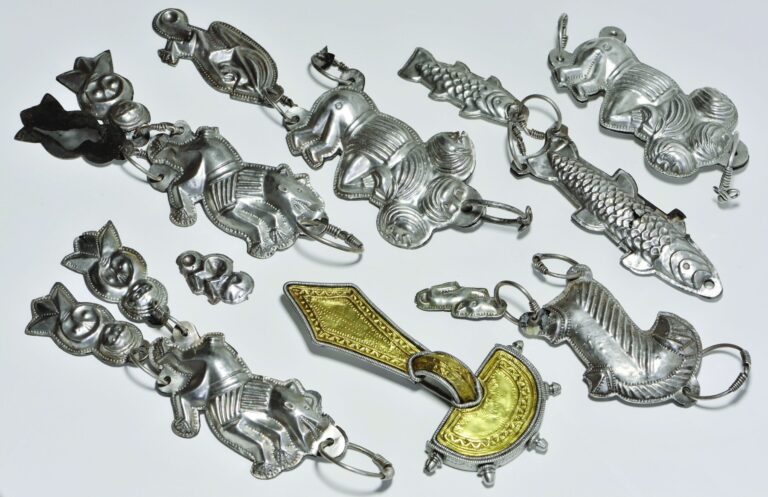
– Imagines Maiestatis. Barbarian Coins, Elite Identities and the Birth of Europe implemented within the international grant of the Polish National Science Centre and Deutsche Forschungsgemeinschaft ‘Beethoven’ together with Deutsches Archäeologisches Institut (DAI).
The Department staff have been participants of many international projects:
Current research projects:
Aleksander Bursche (Project leader), Jakub Artemiuk (PhD student, grantee)
Scientific, legal and practical aspects of archaeological heritage protection in Poland after 1989, a comparative approach;
Implementation: 2022-2026, NCN, Preludium Bis 3 nr 2021/43/O/HS3/01186
The aim of the project is to verify whether the archaeological heritage protection system established in Poland after 1989 serves the research tasks of archaeology, ensures effective protection of archaeological heritage, encourages reporting new archaeological finds to the authorities and prevents crimes against archaeological monuments. An analysis of the solutions adopted for the protection and registration of archaeological monuments in selected countries (Denmark, England and Wales, Belgium, Italy, Romania) will also be made as a part of conducted research.
Arkadiusz Dymowski (Project leader), Kyrylo Myzgin (researcher), Vital Sidarovich (researcher)
Barbarian fakers. Manufacturing and use of counterfeit Roman Imperial denarii in East-Central Europe in antiquity (Barbarzyńscy fałszerze. Wytwarzanie i użytkowanie fałszywych denarów rzymskich z okresu cesarstwa w Europie Środkowo-Wschodniej w starożytności)
Implementation: 2019-2024, NCN nr 2018/31/B/HS3/00137
The project addresses the phenomenon of manufacture and use of fake Roman denarii of the first-second centuries AD in East-Central Europe in Antiquity. Recent years have brought a landslide of new finds of these coins, particularly in Eastern Europe, both silver-plated denarii (subaerati), and copies, cast from base metal alloy, but also from alloys with a high silver content, (flati). Until recently the territory of the Roman Empire was viewed as the only centre of production of these coins. However there is no longer any doubt that fake coins were manufactured on a mass scale also on the barbarian territory. This was confirmed in a most spectacular manner by recent discoveries of ancient counterfeiting workshops in our part of Europe. One of the project tasks was non-destructive analysis of coins recovered in Poland, Ukraine and Belarus manufactured in barbarian workshops, the first interdisciplinary study of the production and use of fake Roman coins outside the Greek and Roman world.
Piotr Jaworski (Project leader), Szymon Jellonek (researcher, post-doc)
Coin circulation in the Byzantine and Umayyad Marea/North Hawwariya: studies in the monetary economy of Mareotis region in the hinterland of Alexandria. (Obieg monetarny w bizantyńskiej i umajjadzkiej Marei/Północnej Hawwariji: badania nad gospodarką pieniężną regionu Mareotis na zapleczu Aleksandrii),
Implementation: 2021-2025, NCN OPUS 20, nr 2020/39/B/HS3/03102
Marea/Philoxenite (Northern Hawwariya in Egypt) is an archaeological site approximately 40 km west of Alexandria, on the southern shore of Lake Mareotis. The city experienced a ‘Golden Age’ during the Byzantine period after the emergence of a Christian pilgrimage centre at the nearby Abu Mena. Marea/Philoxenite a large urban centre with an impressive layout presumably owes its existence to its position on pilgrim traffic between Alexandria and Abu Mena Since 2000, comprehensive archaeological research at Marea has been conducted by the University of Warsaw in cooperation with the Archaeological Museum in Krakow, which yielded ca. 8,500 coins. This assemblage collected on a single site from well-understood archaeological contexts can be used in future to recognize the monetary circulation in a large Byzantine city in the hinterland of Alexandria.
Szymon Jellonek (Leader)
Circulation of Late Antique coins in Novae
Small Grant CRAC X
The focus of the project is the nature of the supply and circulation of coins in Late Antique Novae in the Roman province of Moesia Secunda (now Bulgaria) – a military frontier town. Two assemblages of coins will be examined, one recovered from the town centre and one from its margin (‘annex’, the site of a former necropolis) to identify possible differences. The finds derive from recent excavation seasons of the Faculty of Archaeology Expedition led by dr hab. Agnieszka Tomas.
The area described as ‘annex’ in our research was excavated between 2017 and 2021 uncovering the remains of Late Antique structures built on the site of an earlier cemetery. This makes the Late Antique coins an assemblage distinct from the coin finds assemblage of finds from the period of the Principate. While the necropolis has been published (Tomas et al. 2020), the Late Antique phase of this site is currently under analysis. In 2021 fieldwork moved to the site of the retentura, in immediate vicinity of the headquarters (principia). During the most recent seasons Late Antique layers were uncovered corresponding in their chronology to the phases of the ‘annex’.
Kyrylo Myzgin (Project leader)
The neural network of solidi. Contacts between Romano-Byzantine and barbarian worlds in the light of die-linked gold coins found in Europe and Central Asia (Neuronowa sieć solidów. Kontakty pomiędzy światem rzymsko-bizantyńskim i barbarzyńskim w świetle połączeń stempli złotych monet znalezionych w Europie i w Azji Środkowej)
Implementation: 2021-2024, NCN nr 2020/39/B/HS3/01513
Our goal is obtaining new data about political contacts between Romans and Barbarians, and among barbarians themselves, between the 4th and 6th century through the study of the chronology, directions and reasons of the influx of gold coins to the territories beyond the Roman limes, and their redistribution within the Barbaricum. In this respect die-link studies offer a huge potential helping to recognize migration routes of individual coins or their groups. The traditional visual method of die-link analysis using human eyesight is labour intensive and we hope to train Artificial Intelligence to recognize the patterns on coins (deep learning). Our Artificial Intelligence Coin Network (AICN) software will use a convolutional neural network for visual recognition of coin die patterns and links between them.
Vital Sidarovich (researcher)
Understanding a deluge of silver: the Paharelshchyna hoard and the beginnings of the silver flow from central Asia to northern Europe (Zrozumienie “potopu” srebra: Skarb z Paharelshchyny i początki napływu srebra ze środkowej Azji do północnej Europy)
Implementation: 2023-2024, John Fell Fund, University of Oxford
The project will analyse the Paharelshchyna Hoard discovered in north-western Belarus containing 1800+ Arabic dirhams and silver scrap, including a fragment of a currency bar attributed to the Balt environment. The hoard was stolen in 1997 from the Museum of the Belarusian State University History Faculty in Minsk. Most of the coins from the hoard later turned up on auctions across Europe, and some of them passed to public museum collections in Stockholm and Tübingen. A monograph of the Paharelshchyna Hoard will be published in 2024.
Vital Sidarovich (Leader)
Finds of coins of Bithynia from the eastern Barbaricum
Small Grant CRAC IX
The focus of the project research are coins of Bithynia found in Lithuania and Belarus. While Bithynian coins have been interpreted as Gothic war trophies some area recorded outside the territory identified with Gothic cultures, including the territory of modern Lithuania and north-western Belarus inhabited in the Roman Period by Balt communities.
Anna Zapolska (Leader)
Die Gräber mit römischen Münzen aus dem Gräberfeld der Dollkeim-Kovrovo Kultur in ehem. Grebieten
(Groby z monetami rzymskimi z cmentarzyska kultury Dollkeim-Kovrovo w dawnym
The aim of the project is analysis of grave inventories with Roman coins excavated on the Dollkeim-Kovrovo culture cemetery at former Grebieten. After Bolshoe Isakovo (fmr. Lauth) the Grebieten is the cemetery with the largest number of Roman coin finds recorded in the Dollkeim-Kovrovo culture. The grave assemblages in which the coins occurred will be analyzed using archival data, surviving coins and other archaeological objects, and the published record. In addition to a chronological and strictly archaeological analysis, an attempt will be made to determine the function and role of coins and bronzes in the Dollkeim-Kovrovo culture in relation to other West Balt cultures (Western Lithuanian Stone-Circle Graves culture, Bogaczewo culture), and the role of bronze (including Roman coins) in the formation of local West Balt elites.
